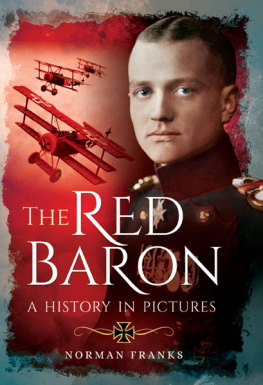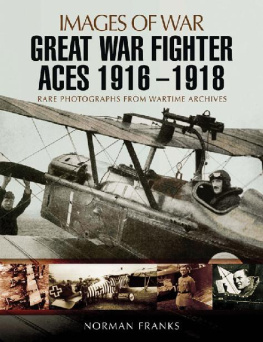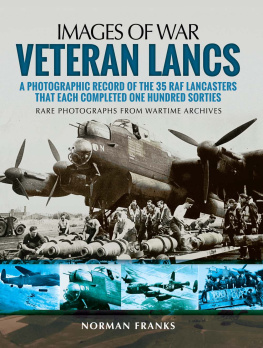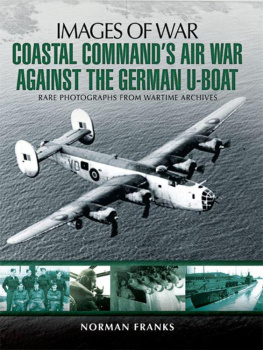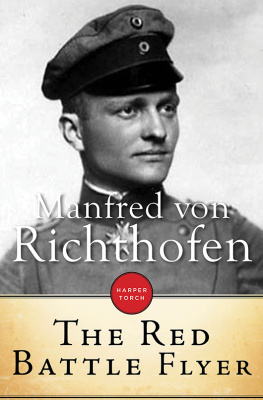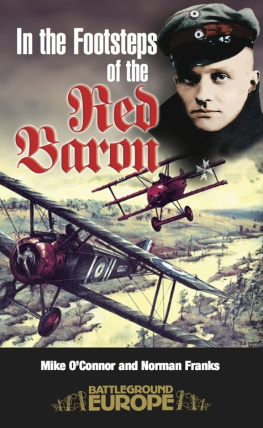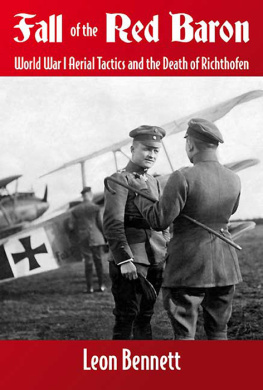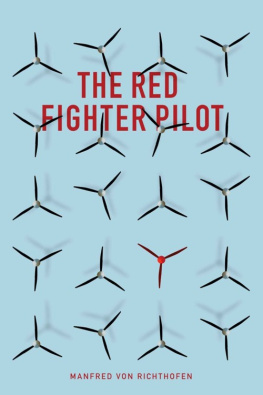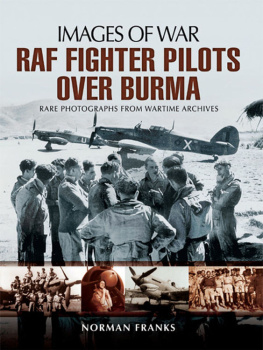
First published in Great Britain in 2016 by
Pen & Sword Aviation
an imprint of
Pen & Sword Books Ltd,
47 Church Street, Barnsley,
South Yorkshire.
S70 2AS
Copyright Norman Franks 2016
ISBN: 978-1-47386-122-0
PDF ISBN: 978-1-47386-125-1
EPUB ISBN: 978-1-47386-124-4
PRC ISBN: 978-1-47386-123-7
The right of Norman Franks to be identified as Author of this Work has been asserted by him in accordance with the Copyright, Designs and Patents Act 1988.
A CIP catalogue record for this book is available from the British Library
All rights reserved. No part of this book may be reproduced or transmitted in any form or by any means, electronic or mechanical including photocopying, recording or by any information storage and retrieval system, without permission from the Publisher in writing.
Typeset in Ehrhardt by Mac Style Ltd, Bridlington, East Yorkshire
Printed and bound in Great Britain by CPI
Pen & Sword Books Ltd incorporates the imprints of Pen & Sword Aviation, Pen & Sword Family History, Pen & Sword Maritime, Pen & Sword Military, Pen & Sword Discovery, Wharncliffe Local History, Wharncliffe True Crime, Wharncliffe Transport, Pen and Sword Select, Pen and Sword Military Classics
For a complete list of Pen & Sword titles please contact:
Pen & Sword Books limited
47 Church Street, Barnsley, South Yorkshire, S70 2AS, England.
E-mail:
Website: www.pen-and-sword.co.uk
Contents
Chapter One
From Soldier to Airman
T here can be few people who have not heard of the name of Manfred von Richthofen, or perhaps the more usual term The Red Baron (although he never was a baron, that title being held by his father). He was born into a world so different from modern times that few of us would recognise Europe as it was then, not understanding that for the majority of upper-class Germans military service was a duty, and not something that had to be endured for a short time similar to national service. So it would have been perfectly natural for him and his brother Lothar to become soldiers for the Fatherland without a second thought.
Freiherr Manfred Albrecht von Richthofen, the eldest son of Rittmeister Albrecht Philipp Karl Julius von Richthofen, serving with the Leibkrassier Regiment, was born on 2 May 1892, a brother for sister Ilse, born in 1890. Albrecht was thirty-three years of age when Manfred was born, and he had married Kunigarde von Schickfus und Neudorff, from a wealthy Silesian family. Kunigardes father Leopold inherited his fathers estates, while also marrying Therese, the daughter of Baron von Falkenhausen of Wallisfurth. Thus the family itself was wealthy, with a place in society, not that Albrecht and his bride saw much of it, he having to rely mostly on his army pay. Indeed, when their children came along they were living in an apartment in Kleinburg, in the suburbs of Breslau (now part of the city of Wrocaw, Poland).
In an endeavour to find cheaper accommodation, the family moved to Schweidnitz (now widnica, Poland) and, although helped by Kunigardes allowance, when the time came for the children to begin school, there had to be a move back to Breslau, especially as brother Lothar Siegfried von Richthofen came along in September 1894. Then, plunging into an icy river to save the life of one of his soldiers, Albrecht suffered a chill that brought on a serious illness which caused deafness and he had to resign his career.
The children were schooled at home initially, but Manfred was eventually enrolled in a local grammar school before, inevitably, joining the army cadet corps. From here he was eventually assigned to the 1st Uhlan Cavalry Regiment in 1911. Lothar finished his schooling and joined the army in 1914, serving with the 4th Dragoon Regiment. Albrecht volunteered for limited military service with the rank of major.
This story must now jump in time. Manfred saw active duty with his regiment in the opening months of the war but, with the coming of trench warfare, cavalry units on both sides lost their traditional role of reconnaissance and stirring charges, so that many Cavalrymen turned to a more active form of duty, that of flight. Aviation was still new but it was becoming obvious that flying was going to be a major feature in a new kind of warfare, for they could fly high across the trench lines to reconnoitre for the generals and fight the opposing airmen whenever they met. It was going to be an exciting, if dangerous, occupation.
Manfred first saw cavalry duty in Russia before moving to France but was soon the recipient of the Iron Cross 2nd Class. In May 1915 he was accepted into aviation and trained to become an observer. This was quite normal in the First World War; officers were generally the captains of the aeroplane, the pilot merely the driver and, more often than not, an NCO. Manfreds first operational assignment was again on the Russian front, being posted to Flieger-Abteilung Nr. 69 (FA.69) but he then returned to the Western Front, joining a unit with the cover name of Mail Carrier Pigeon Unit, at Ostende, that was in reality a long-range bombing unit. It was known as BAO (Brieftauben-Abteilung-Ostende (or Mail Pigeon Unit), the unit camouflaged by this name.
By this time he had decided it would be preferable to fly aeroplanes rather than be a passenger and so applied for pilot training, which he completed at Dberitz; in March 1916 he was assigned to KG.2 (Kampfgeschwader Nr. 2), on the Verdun (French) Front. This was at a period that saw the introduction of serious air battles between the airmen of both sides. While airmen had been happy enough firing pistols or carbines at each other if they met in the air, each sides aggressive aviators were experimenting with machine guns. The Germans had developed their Fokker Eindecker single-seat aeroplanes, which they assigned piecemeal among the two-seater units for escort duty, but the pilots who volunteered to fly them, once they had been fitted with a machine gun that fired through the arc of the propeller, were more than anxious to become fighter pilots and engage the Allied aeroplanes. The early aeroplanes, fitted with a propeller in the front, made it impossible to fire directly forwards, but Fokkers team invented a way of doing so, making his, until then, fairly unimpressive monoplane, a deadly aggressor in the air. The Allies, and particularly the British, took on an aggressive stance from the start, and were only too anxious to engage their opposite numbers in air battles. The age of the fighter pilot, the dogfights, the aces, had begun.
These early aces became household names: Max Immelmann, Oswald Boelcke, Max Mlzer, Kurt Wintgens, Otto Parschau, Hans Buddecke, Walter Hhndorf, et al. They found success flying Anthony Fokkers monoplane but, because the Germans did not want the secret of their interrupter gear to be discovered, and since there were so few eindeckers, the fighting pilots were forbidden to cross the lines into Allied territory. From this time the Germans continued their air war in a mostly defensive mode.
By the time Manfred began looking towards becoming one of these new air heroes, several had fallen in combat, although all had achieved enough success to receive Germanys highest award for bravery, the Orden Pour le Mrite, a decorative gold and blue enamel cross worn at the neck; due to its blue enamelling, it was referred to as The Blue Max. This seemed to be a magical magnet for successive German air fighters. The first two awarded went to Max Immelmann and Oswald Boelcke; when the former was killed, Boelcke was taken away from front-line action. However, he took the time to suggest that rather than distributing Fokkers piecemeal among the two-seater units they should be gathered together in small groups to act independently. They could continue to protect their two-seater comrades while also operating aggressively against British and French aeroplanes over the front.
Next page
